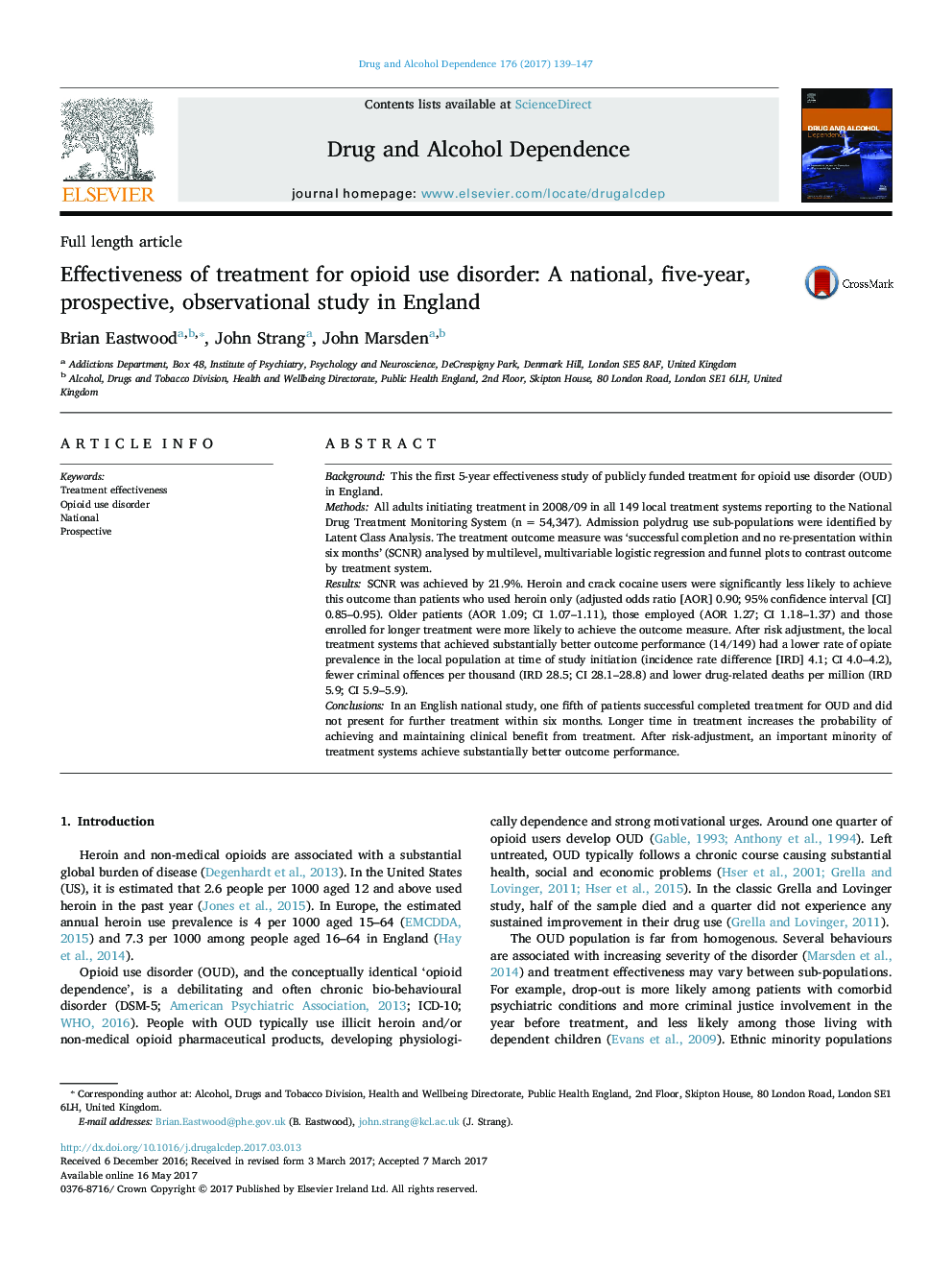| کد مقاله | کد نشریه | سال انتشار | مقاله انگلیسی | نسخه تمام متن |
|---|---|---|---|---|
| 5120006 | 1486115 | 2017 | 9 صفحه PDF | دانلود رایگان |
- One fifth of patients completed treatment and did not re-present within six months.
- Longer treatment, employment, and stable housing were positive predictors of outcome.
- Crack cocaine problems reduced the likelihood of achieving the outcome.
- Relatively worse performing local treatment systems had more drug-related deaths.
BackgroundThis the first 5-year effectiveness study of publicly funded treatment for opioid use disorder (OUD) in England.MethodsAll adults initiating treatment in 2008/09 in all 149 local treatment systems reporting to the National Drug Treatment Monitoring System (n = 54,347). Admission polydrug use sub-populations were identified by Latent Class Analysis. The treatment outcome measure was 'successful completion and no re-presentation within six months' (SCNR) analysed by multilevel, multivariable logistic regression and funnel plots to contrast outcome by treatment system.ResultsSCNR was achieved by 21.9%. Heroin and crack cocaine users were significantly less likely to achieve this outcome than patients who used heroin only (adjusted odds ratio [AOR] 0.90; 95% confidence interval [CI] 0.85-0.95). Older patients (AOR 1.09; CI 1.07-1.11), those employed (AOR 1.27; CI 1.18-1.37) and those enrolled for longer treatment were more likely to achieve the outcome measure. After risk adjustment, the local treatment systems that achieved substantially better outcome performance (14/149) had a lower rate of opiate prevalence in the local population at time of study initiation (incidence rate difference [IRD] 4.1; CI 4.0-4.2), fewer criminal offences per thousand (IRD 28.5; CI 28.1-28.8) and lower drug-related deaths per million (IRD 5.9; CI 5.9-5.9).ConclusionsIn an English national study, one fifth of patients successful completed treatment for OUD and did not present for further treatment within six months. Longer time in treatment increases the probability of achieving and maintaining clinical benefit from treatment. After risk-adjustment, an important minority of treatment systems achieve substantially better outcome performance.
Journal: Drug and Alcohol Dependence - Volume 176, 1 July 2017, Pages 139-147
